Hello, friends! Today, we're diving into a realm of nutrition that's gained quite the buzz – Clean Keto. But hold on, don't let the term intimidate you. Whether you're all-in on a low-carb diet or just curious about incorporating clean keto recipes, this article has something for everyone. Introducing: our Clean Keto Meal Plan and Guide where theres something for everyone!
Jump to:
- Introduction
- What is a Keto Diet?
- Benefits of Keto
- Clean Keto vs Dirty Keto
- Benefits of Clean Keto
- Common Keto Ingredients
- Get the Healthiest Cooking Oils
- Dairy Selections
- Best Quality Protein
- Eat Your Veggies
- Smart Swaps
- Hydration and More
- Morning Rituals and Coffee
- Meal Prep
- Free 7 Day Low Carb Meal Plan
- FAQ
- Notes on Ketosis
- Comments
In a world where food trends come and go, the concept of Clean Keto stands out as a versatile approach. We're here to guide you through the ins and outs of this nutritional path, drawing from holistic wisdom and years of experience.
As a holistic nutrition specialist, I want to make it clear from the get-go that this article is not a substitute for medical advice. Rather, it's an informative guide to help you make conscious choices in your dietary journey.
Introduction
We'll start by breaking down the basics: What is keto, and how does it differ from a Clean Keto diet and its less attractive cousin, Dirty Keto? You'll gain insights into the nuances of these approaches, along with a critical look at the potential pitfalls of following a dirty keto regimen.
Understanding the fundamentals of keto and a low carb diet is essential. But equally crucial is grasping the concept of clean eating. We'll delve into the importance of choosing whole, nutrient-rich foods that nourish your body and mind.
It's not just about the carb count – it's about the quality of those carbs.
As we venture deeper, you'll find a sample one-week free keto meal plan that showcases the delectable side of Clean Keto. But that's not all. We'll explore common ingredients found in keto recipes and unveil smart swaps to elevate your nutrition game.
Because eating well doesn't have to be complicated; it's about making mindful choices that align with your health goals.
Before we continue, let's establish some boundaries. This article isn't medical advice; it's an informative resource crafted by a holistic nutrition specialist.
Remember, while a strict keto diet might not suit everyone, the beauty of low carb eating is that it's adaptable. Incorporating it into your routine can yield benefits for all, regardless of your dietary preferences.
And here's a tidbit of personal wisdom: While intermittent keto cycles can work for some, most individuals thrive on a balanced intake of complex, nutrient-dense carbohydrates.
In moderation, these carbs can be your ally in achieving optimal bodily function. But more on that later. For now, let's embark on this journey to Clean Keto, where nourishment and wellness intertwine most harmoniously.
What is a Keto Diet?
At the heart of Clean Keto lies a unique dietary approach known as the ketogenic diet, often simply referred to as "keto."
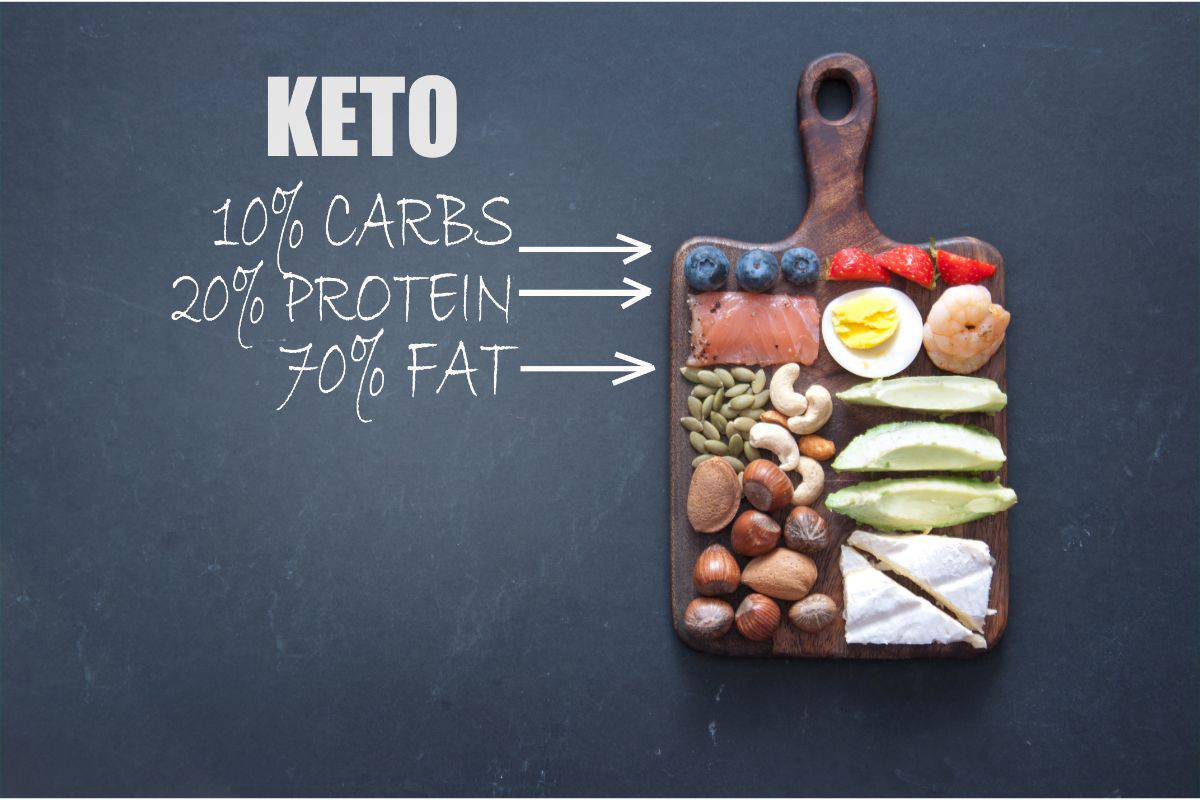
This high-fat, low-carb way of eating has captured attention for its potential benefits and distinctive characteristics. Let's break down the fundamentals.
A keto diet revolves around specific macronutrient ratios: high fat, moderate protein, and grams of net carbs kept to a minimum.
By significantly reducing your carb intake and replacing it with healthy fats, your body enters a state called ketosis. This metabolic state prompts your body to use fat as its primary source of fuel instead of glucose from carbohydrates.
Blood sugar control takes center stage in this dietary revolution. With limited carb consumption, your body's insulin response is reduced, which can be particularly beneficial for those managing insulin resistance or diabetes.
This newfound balance can contribute to improved energy levels and overall well-being.
Now, let's address the high-fat aspect. Embracing a high-fat diet might seem counterintuitive, but it's the cornerstone of keto.
By increasing your fat intake, your body becomes adept at burning fat for fuel, making it an effective strategy for weight management and even promoting mental clarity.
As you embark on this new way of eating, it's essential to note that keto meal planning goes beyond just tracking carb intake. Balancing your macronutrients is key to ensuring you're getting adequate nutrients while staying in ketosis.
The general recommendation is to consume 70% healthy fats, 20-25% protein, and 5-10% carbohydrates to stay in ketosis. This typically equals a threshold of no more than 50 grams of carbs daily.
Benefits of Keto
The following reasons are among the health benefits and key drivers for individuals adopting a keto lifestyle:
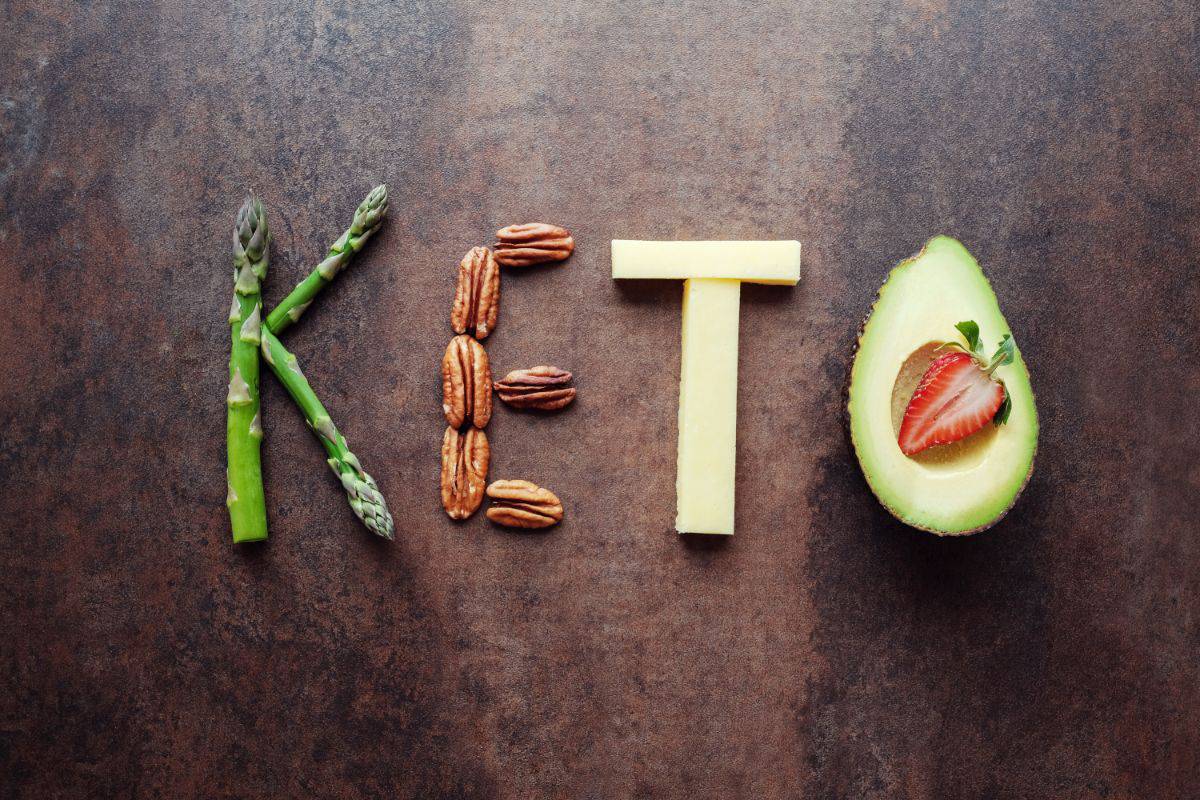
Weight Loss: Many find that the keto diet can aid in weight loss due to its effect on appetite and fat metabolism.
Improved Energy: With stable blood sugar levels and efficient fat utilization, energy slumps become less common.
Enhanced Mental Focus: Some individuals report increased mental clarity and focus while following a keto regimen.
Blood Sugar Management: For those with insulin resistance, keto may contribute to better blood sugar control.
Long-Term Benefits: While more research is needed, some studies suggest potential long-term benefits such as reduced risk of heart disease and improved metabolic health.
It's important to approach keto with mindfulness and proper knowledge. While a keto diet can offer remarkable benefits, it might not be suitable for everyone in the long term.
Understanding the intricacies of your body's response to carb intake and tracking your progress can guide you in determining whether this approach aligns with your holistic health goals.
In the next segment, we'll distinguish between Clean Keto and Dirty Keto, shedding light on the importance of quality food choices in your keto journey.
Clean Keto vs Dirty Keto
When it comes to keto, it's not just about macros – it's about your overall health journey. Let's explore the divergent paths of Clean Keto and Dirty Keto, and why making conscious choices matters for a thriving life.

Clean Keto: Prioritizing Quality for Your Well-being
Clean Keto isn't just about reaching your macros; it's a commitment to nourishing your body. Beyond the grams of net carbs, a clean ketogenic diet emphasizes the quality of the ingredients you consume. This approach goes beyond the surface, encouraging you to embrace a holistic, healthy lifestyle.
In the realm of Clean Keto, whole, unprocessed foods take center stage. Think nutrient-rich vegetables, organic proteins, and healthy fats. The good news? You're fueling your body with the goodness and diversity of micronutrients it needs, from vitamins to fiber.
Artificial sweeteners and processed concoctions with hydrogenated vegetable oil and other carcinogenic ingredients take a back seat in Clean Keto. Instead, you're invited to savor the natural sweetness of berries, nuts, and seeds. Also, check out our guide on low carb natural sweeteners monk fruit and stevia. This mindful approach promotes a sustainable and nourishing relationship with what you eat.
Dirty Keto: Compromising Health for Macros
Dirty Keto might seem tempting for its perceived simplicity and ability to eat whatever food you want including fast food (as long as it's a "fat")– it's all about fitting the macros, right? But let's pause and consider the bigger picture.
While it might fulfill carb quotas, the quality of your meals takes a hit. And a lot of processed fatty foods contain trans fats which cause weight gain and contribute negatively to heart disease and inflammation.
This approach might involve indulging in artificially sweetened treats and processed foods. While they may align with your carb count, they sidestep the essence of a healthy keto diet plan. Prioritizing macros over the quality of ingredients can leave your body lacking essential nutrients and feeling rough.
Benefits of Clean Keto
Choosing Clean Keto means embracing a variety of healthy foods. Vegetables in an array of colors, organic proteins, and nourishing fats form the basis of your weekly meal plan.
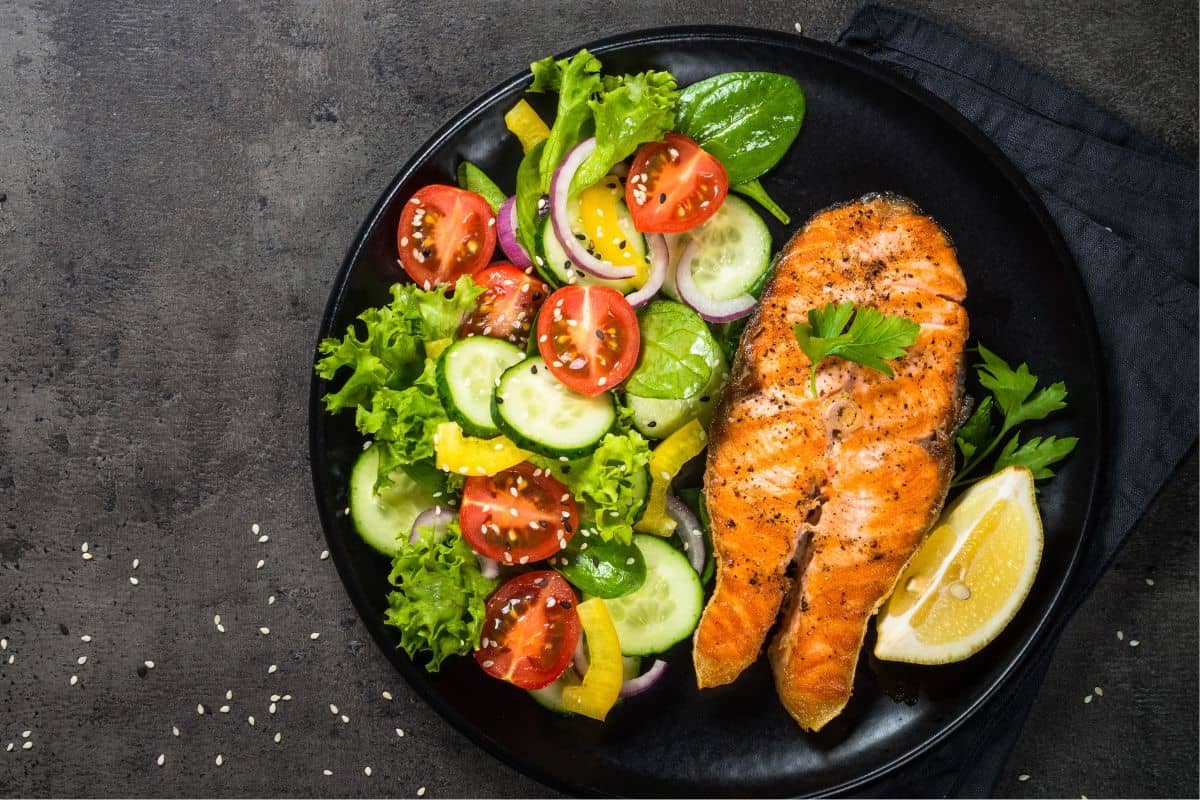
This diverse palette provides essential vitamins, minerals, and antioxidants that contribute to your overall well-being.
Unprocessed foods play a crucial role in Clean Keto. These options not only support ketosis but also enhance your digestive health, boost energy levels, and promote mental clarity. Your journey isn't solely about weight loss; it's about fostering vitality from within.
Protein isn't forgotten in the Clean Keto approach. Ensuring you get enough protein is a key aspect of a healthy keto diet plan. Organic meats, poultry, fish, and plant-based sources like nuts and seeds in your keto meals offer a good option for maintaining muscle mass and overall health.
Remember, moderation is key. Even in Clean Keto, healthy fats are prized, but enjoying them in small amounts ensures you stay within your daily calorie range.
In this ongoing exploration of Clean Keto, we're diving deeper into keto meal planning and crafting a sample one-week keto diet meal plan that reflects the vibrancy of this approach.
With each mindful choice, you're nurturing your body and your well-being. Stay with us as we uncover more ways to thrive through nourishing nutrition.
Common Keto Ingredients
Venturing deeper into the realm of Clean Keto, let's embark on a journey through the essential components that form the foundation of your meals.
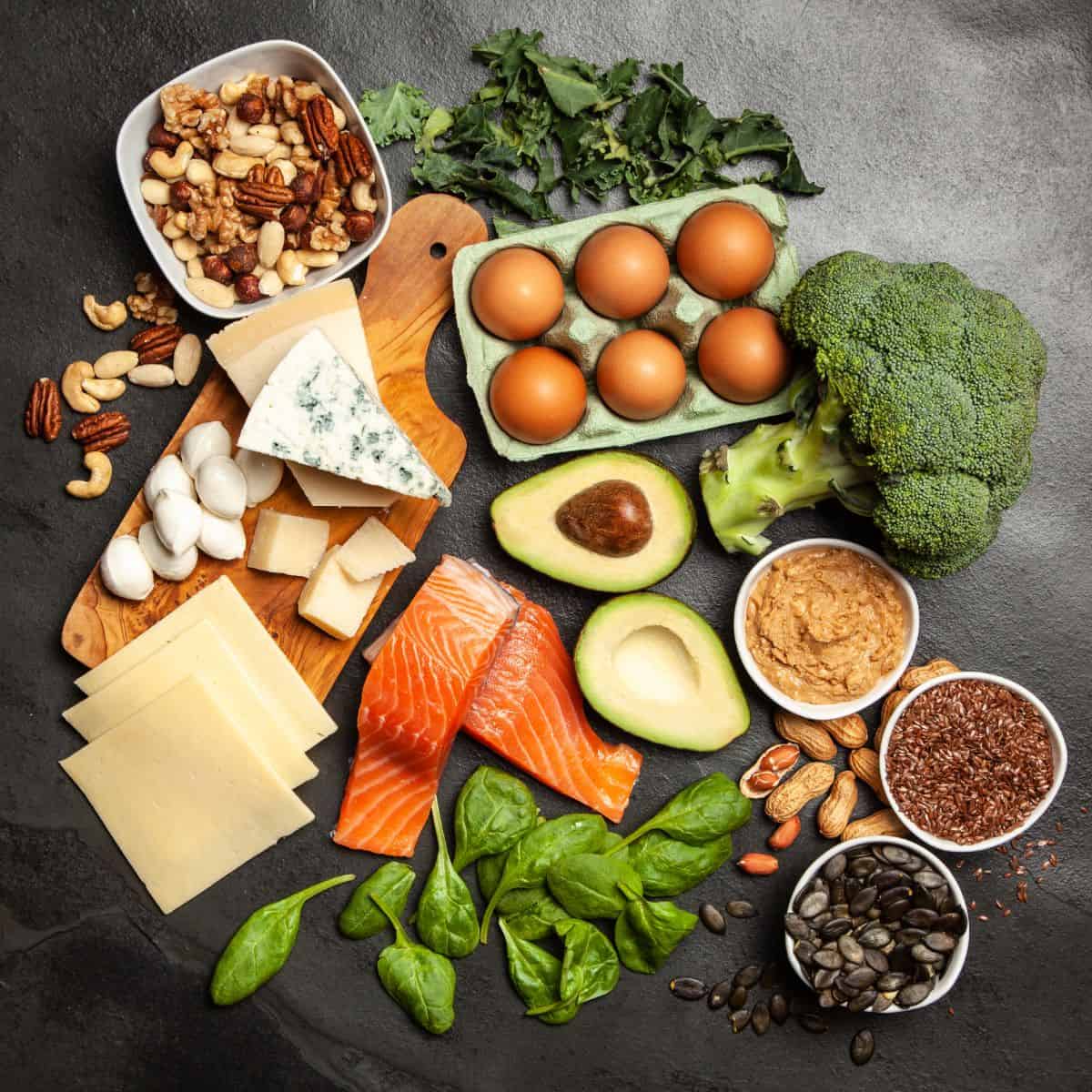
These common keto ingredients are more than just sustenance – they're the artistry of nourishment that fuels your well-being. Before you head to the grocery store, you will want to consider the quality of nutritious whole foods that make up your meals.
Get the Healthiest Cooking Oils
Healthy fats hold the key to keto success. In your shopping list, include coconut oil, avocado oil, and ghee.
These are ideal for cooking due to their high smoke points. They offer a clean, flavorful, and nutrient-dense foundation for your culinary creations.
 Chosen Foods 100% Pure Avoc...Shop on Amazon
Chosen Foods 100% Pure Avoc...Shop on Amazon
Dairy Selections
If you choose to incorporate dairy products, navigate the dairy aisle with care.
Opt for organic full-fat options like cheddar cheese, grass-fed butter, and greek yogurt.
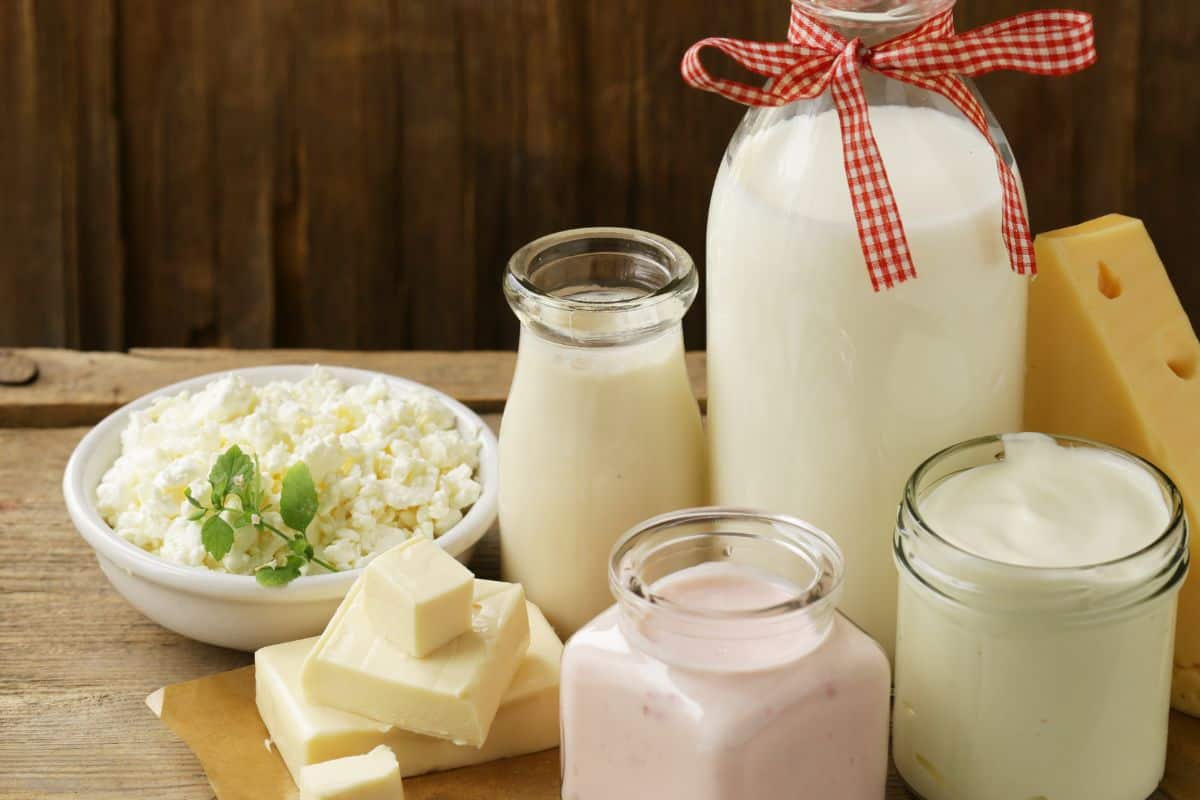
If cream cheese is on your list, consider Fage 5% full-fat yogurt as a cleaner alternative. It has a similar texture to cream cheese and gives recipes the right creamy goodness with extra nutrients! Win-win.
Coconut milk, almond milk, and unsweetened yogurt are also excellent choices.
 Thai Coco Organic Coconut M...Shop on Amazon
Thai Coco Organic Coconut M...Shop on Amazon
Full-fat cheese is the best keto experience. Parmesan cheese and other shredded cheese should be opted for with care. Many pre-shredded cheeses contain hidden carbs in the form of starches. It is always best to buy a block of cheese and shred it at home!
If you wish to avoid dairy, there are dairy-free options like nutritional yeast for a cheesy flavor as well as yogurt made from coconut, almond, or other plant-based milks. Just be sure to check the ingredients!
Best Quality Protein
Grass-fed beef, free-range chicken, and wild-caught fish are your go-to choices for clean protein.
Ground beef is a versatile option, ideal for a range of dishes. When picking bacon, pepperoni, or other cured meats, ensure they're uncured to avoid carcinogenic ingredients.
And don't forget about pork rinds; swap them for healthier alternatives like grain-free baked cheese crisps, almond flour, or homemade crispy dehydrated vegetables.
 Inno Foods Organic Coconut ...Shop on Amazon
Inno Foods Organic Coconut ...Shop on Amazon
 Proudly Pure Parmesan Chees...Shop on Amazon
Proudly Pure Parmesan Chees...Shop on Amazon
Eat Your Veggies
When strolling through the produce section, load up on leafy greens and low-carb vegetables. These nutrient-dense selections form the basis of your meals.
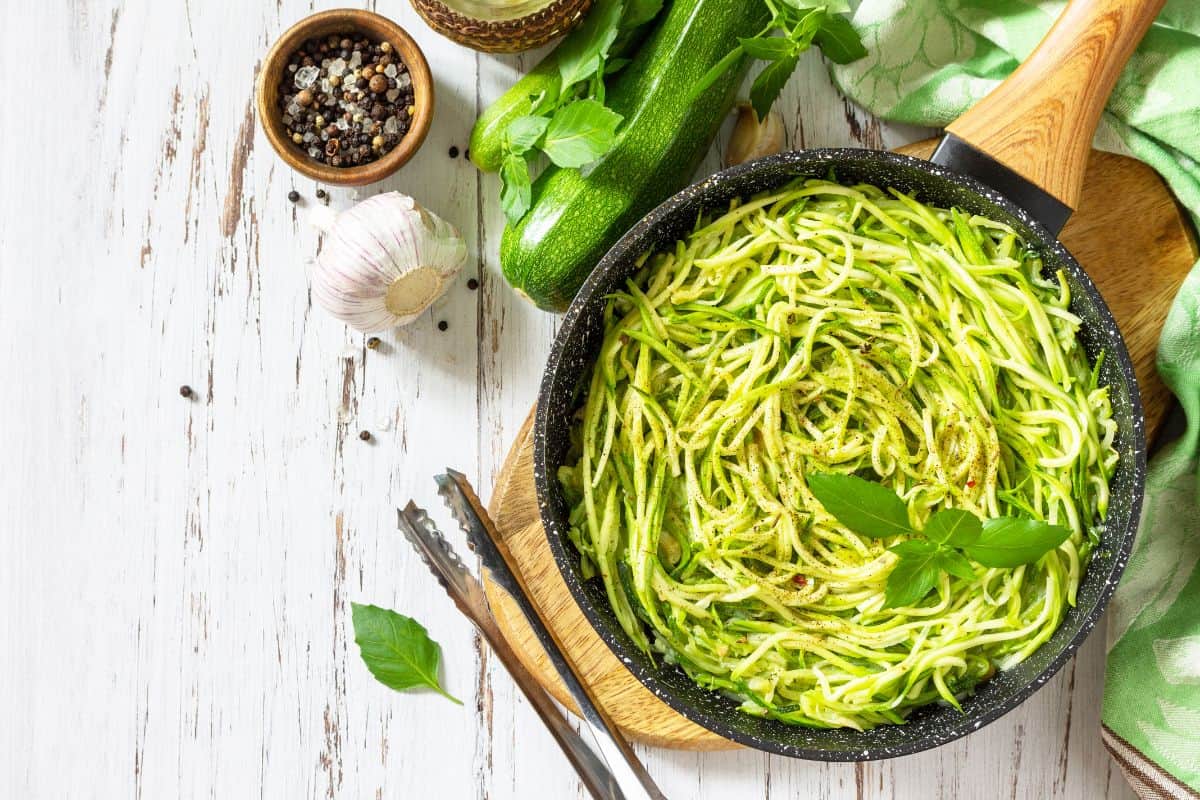
Fresh produce can easily be converted into cauliflower rice, zucchini noodles, spaghetti squash, and other spiralized goodness that replaces common carbohydrate-rich pasta dishes.
Vegetables high in carbs include root vegetables like carrots, potatoes, yams, and beets. These need to be used in moderation to avoid too high of a carb count for those seeking to maintain ketosis. Otherwise, simply incorporate these with care!
It's important to get a rich variety of enzymes and phytonutrients by eating the rainbow. This means, finding as many diverse colors of foods- especially fruits and vegetables.
Eating raw fruits and veggies periodically also helps to obtain the delicate and extremely beneficial enzymes that they offer.
Heating foods too much (especially in the microwave) often kills off the enzymes and depletes the nutrients. Lowering the heat and keeping a variety is key!
 Organic Spaghetti SquashShop on Amazon
Organic Spaghetti SquashShop on Amazon
Smart Swaps
Incorporate almond flour or coconut flour for baking instead of traditional flours. Choose whole-food options for fats like olive oil and coconut oil.
As for vegetable oils, opt for clean, unrefined versions like avocado oil and extra virgin olive oil. These choices protect your health and enhance your dishes.
Sour cream can be swapped with greek yogurt, our family loves doing this and no one will notice a difference. In fact, I also use greek yogurt instead of mayo as mayonnaise is commonly processed. The switch tastes great!
For those looking for a more vegan or vegetarian keto experience, consider using tempeh or jackfruit as a healthy meat alternative as opposed to the processed meat substitutes made in a lab.
Hydration and More
Stay hydrated with water infused with a splash of fresh lemon juice or herbal teas. Almond milk is a creamy, low-carb dairy substitute. For a touch of sweetness, explore low carb fruits in moderation. Berries are a great option!
And for those delightful keto desserts, use pure monk fruit or stevia as clean sweeteners.
Morning Rituals and Coffee
Coffee drinkers needn't sacrifice their morning cup of joe! Simply omit the sugar-filled sweetener and opt for a carb-free sugar alternative that is natural like monk fruit or stevia.

Just be sure it is pure monk fruit or pure stevia with no added ingredients! Check out our article on healthy coffee creamers for diabetics (this means keto and low carb too!) We also have articles on keto coffee and how to use it while intermittent fasting!
For those who like tea, there are many superfood teas to choose from! Simply add your favorite low carb sweetener or drink it plain too!
Matcha green tea is one of the most potent antioxidant teas available. Check out our guide on how to choose the best quality matcha.
For extra anti-inflammatory and liver cleansing boost, I start my day with an energizing turmeric lemon juice recipe followed a spoonful of black seed oil, then a few sips of kefir about 20 minutes later and then keto coffee and breakfast.
On alternate days I love to take a shot of wheatgrass or barleygrass for a deeper detoxifying experience! It really starts the day off right!
Meal Prep
As you create your Clean Keto meals, prioritize organic meats and cheeses. These choices limit exposure to hormones and pesticides. When meal prepping, prepare chicken broth and grass-fed bone broth in advance for flavorful bases.
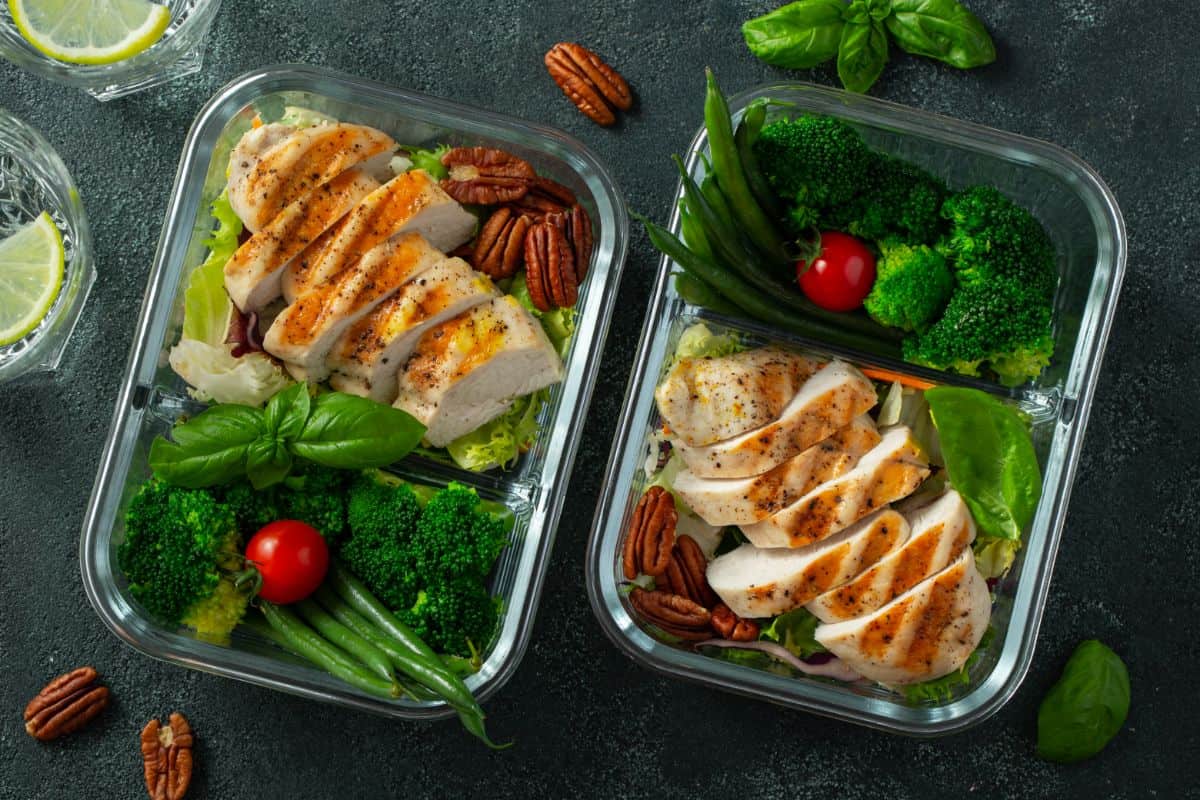
Remember, small changes lead to significant impact. Crafting a side salad with a range of low-carb vegetables ensures your meals are as nutritious as they are delicious.
Be sure to make your own salad dressing. It just takes a healthy fat, an acid like citrus or vinegar, and salt with whatever seasonings you enjoy.
That way you don't have exposure to the processed ingredients in store-bought dressings! It is super simple and so versatile.
In our next section, we'll delve into a one-week sample meal plan, demonstrating how these ingredients come together in a harmonious symphony of delicious meals that nourish on your Clean Keto journey.
Free 7 Day Low Carb Meal Plan
The highlighted recipes have a link to a detailed article and full recipe attached that is also printable!
| Day | Breakfast | Lunch | Dinner |
|---|---|---|---|
| 1 | keto breakfast casserole | Keto Chicken Fajita Casserole | Cajun Salmon with Cauliflower Rice and Spinach |
| 2 | Greek yogurt with berries and chopped nuts and an anti-inflammatory shot. | Keto Buffalo Chicken Broccoli Casserole | Wild-caught pollock with Parmesan Crust |
| 3 | Avocado and poached eggs on arugula. | Grilled Chicken with Asparagus and Cauliflower Mash | Keto Bacon Ranch Chicken and Rice Casserole with a side salad |
| 4 | Almond milk smoothie with spinach and avocado. | Slow Cooker Chicken Taco Soup | Keto Cajun Salmon Alfredo on Spaghetti Squash with green beans |
| 5 | Chia seed pudding with coconut milk and almonds. | Baked Cod with Roasted Broccoli and Mixed Greens | Keto Green Chile Chicken Casserole |
| 6 | Keto Egg bites | Keto Chicken Alfredo Spaghetti Squash | Keto BBQ Chicken Casserole with Asparagus |
| 7 | Cottage cheese with strawberries and chia seeds. | Grilled Vegetable Salad with protein (chicken, steak, tempeh) | Zucchini Noodles with Pesto and Grilled Shrimp |
Feel free to adjust portion sizes and ingredients as needed to suit your preferences and nutritional requirements. Enjoy your clean keto week!
 Viva Naturals Organic Chia ...Shop on Amazon
Viva Naturals Organic Chia ...Shop on Amazon
Be sure to subscribe and follow us on social media for more clean eating and clean keto recipes and holistic nutrition tips and info!
FAQ
A clean keto diet emphasizes consuming nutrient-rich, whole foods while adhering to the principles of a ketogenic eating pattern. This includes incorporating high-quality fats like avocado oil and coconut oil, lean proteins such as grass-fed meats, and a variety of non-starchy vegetables. Clean keto avoids processed foods and artificial sweeteners, focusing on wholesome ingredients that promote both ketosis and overall well-being.
Certainly, you can achieve weight loss with a clean keto approach. By prioritizing whole, nutrient-dense foods and maintaining a low-carb intake, your body can enter ketosis, a state where it burns fat for energy. This combination of clean eating and ketosis can be effective for shedding excess weight while promoting overall health.
To start clean keto, begin by understanding the principles of a ketogenic diet and the importance of whole, unprocessed foods. Focus on incorporating high-quality fats, lean proteins, and non-starchy vegetables into your meals. Gradually reduce your carb intake, opt for clean swaps, and stay hydrated to initiate ketosis and embark on your clean keto journey.
On a clean keto diet, it's crucial to avoid processed foods, artificial sweeteners, and refined grains. Steer clear of sugary snacks, sugary beverages, and foods laden with additives and preservatives. Opt for whole, nutrient-rich choices that align with your clean keto goals and overall well-being.
The biggest mistakes people often make on a keto diet include not tracking their carb intake accurately, neglecting to prioritize nutrient-rich foods, and relying too heavily on unhealthy fats. Skipping essential nutrients like fiber and vitamins from vegetables can also be problematic. It's important to strike a balance, focusing on clean, whole foods and monitoring your macros to make the most of your keto journey.
Check out our web story here!
Notes on Ketosis
Attempting a keto diet should always be done under the supervision of a qualified health practitioner and dietician who can evaluate your personal needs and medical history.
It is important to get a full blood panel evaluated by a functional medical doctor before embarking on strict dietary changes.
However, if you have already gotten the green light from your doctor, this article is a great place to start learning the differences between clean keto and dirty keto and ways to boost your overall health and wellness experience.
In your first week of keto, some may experience what is known as keto flu. It happens when suddenly stopping or reducing carbohydrate intake.
This brief acclimation period may consist of achiness, headaches, fatigue, sugar cravings, or irritability.
It is a sort of healing crisis as your body is getting used to a new way of eating and obtaining energy from fat instead of carbs and sugars. Drink extra water and get necessary rest in order to feel better.
Consume anti-inflammatory and antioxidant-rich foods to help heal and detoxify your body from the toxins that are being released.
Remember, strict keto is not for everyone. Some people may benefit from incorporating one or two keto meals per day into their diet and still eat healthy ancient grains and carbohydrates from time to time like quinoa and amaranth.
Just note, that by doing so you will not necessarily be in a state of ketosis but you should be able to manage a healthy metabolism when consumed in moderation.
Carbohydrates do have health benefits that are necessary for many people. But for short term, a ketogenic diet can be very helpful for some people.
Once we start eating clean and more natural nutrient-dense whole foods, our body, energy, and quality of life drastically improve. When we know better, we do better- and feel better too!
Do you follow a low carb or ketogenic diet? Have you been eating clean while embracing the keto life? How is it working for you? Please share your experiences with us in the comments below!
Have a healthy week!
Natalie

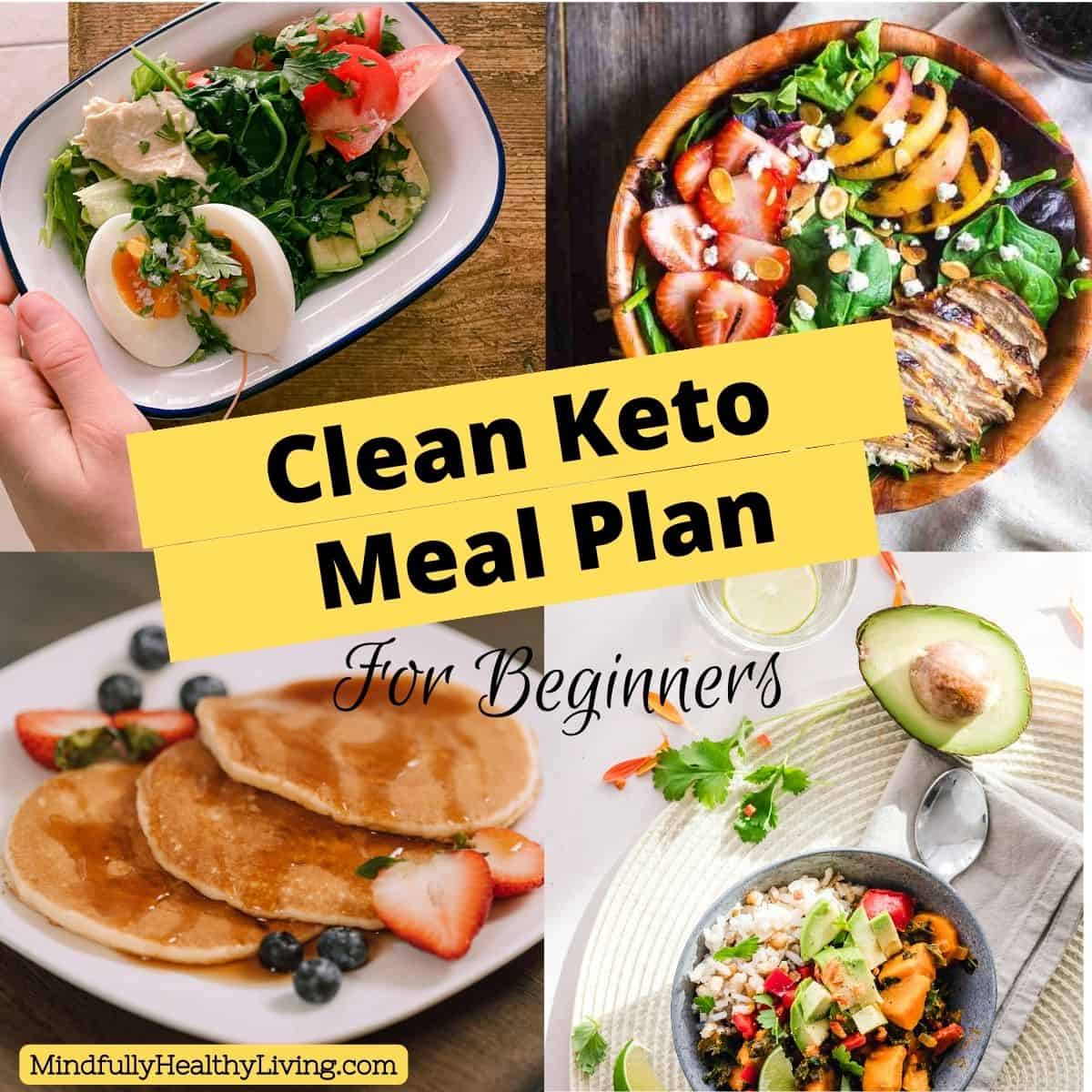




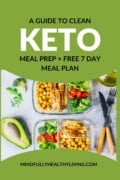

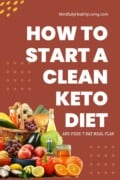

Comments
No Comments